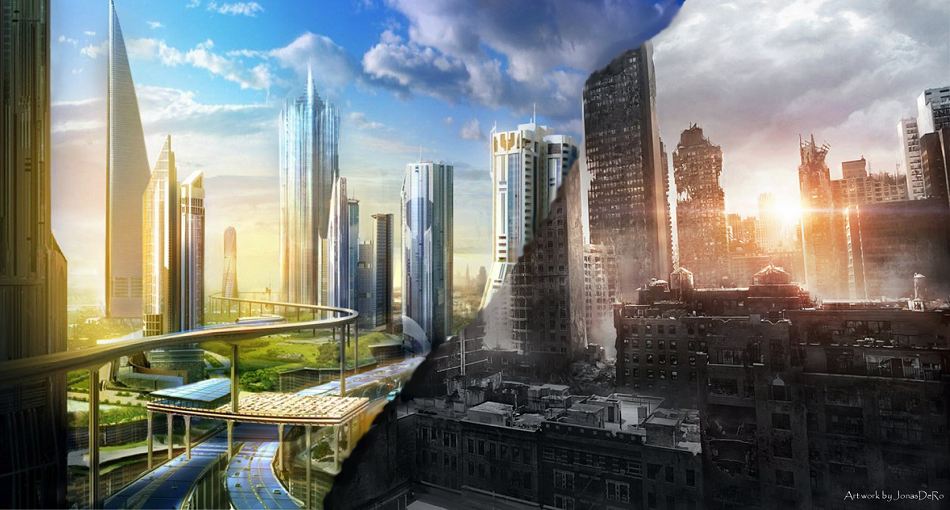
City of Tomorrow: Utopia or Dystopia?
The concept of a "city of tomorrow" has captivated the imagination for centuries. Depicted in literature, film, and art, these futuristic metropolises often envision a world of gleaming towers, advanced technology, and utopian living. However, the reality of urban planning and the complexities of human society raise questions about whether such cities are truly desirable or even possible.
Utopian Visions
Utopias are ideal societies that offer a vision of a perfect world. In classic utopian literature, such as Thomas More’s "Utopia" (1516), cities are designed to promote happiness, prosperity, and equality. They feature abundant resources, harmonious communities, and advanced technology that solves social problems.
In the 20th century, architects and planners proposed utopian city designs inspired by modernist principles. Le Corbusier’s "Ville Radieuse" (1935) envisioned tall towers surrounded by open spaces and green areas. Frank Lloyd Wright’s "Broadacre City" (1932) dispersed buildings across a sprawling landscape, emphasizing individual homes and decentralized planning.
Dystopian Nightmares
In contrast to utopian visions, dystopias are cautionary tales that depict societies gone awry. In George Orwell’s "1984" (1949), London is a totalitarian nightmare where every aspect of life is controlled by the state. Megacities in dystopian novels often suffer from pollution, overcrowding, poverty, and rampant crime.
The rise of surveillance technology in recent times has raised concerns about dystopian scenarios becoming more plausible. Smart cities, which use data and technology to improve efficiency, could also facilitate social control if not carefully managed.
Balancing Idealism and Pragmatism
The challenge for cities of tomorrow is to strike a balance between utopian ideals and practical realities. While it is tempting to imagine perfect cities, it is crucial to recognize the limitations and potential downsides of urban development.
Densely populated cities offer advantages such as economic growth, cultural diversity, and access to amenities. However, they also face challenges related to housing affordability, transportation, environmental sustainability, and social inequality.
Creating Livable Cities
Instead of pursuing unattainable utopias or dystopian nightmares, cities should strive to create livable environments that balance the needs of residents, businesses, and the environment. This involves:
- Promoting density and mixed-use development to reduce sprawl and improve accessibility.
- Investing in public transportation, cycling infrastructure, and walkable neighborhoods.
- Ensuring affordable housing for all income levels.
- Reducing pollution and promoting green spaces to enhance air quality and well-being.
- Fostering social inclusion and community engagement to create a sense of belonging and purpose.
Conclusion
The city of tomorrow is not a fixed destination but rather an evolving concept shaped by technological advancements, cultural values, and the challenges of urbanization. By balancing utopian ideals with pragmatic considerations, we can create livable cities that offer the benefits of modern life without sacrificing human dignity or environmental sustainability.
Ultimately, the future of cities will depend on the choices we make today, as we shape the built environment that will host the generations to come.